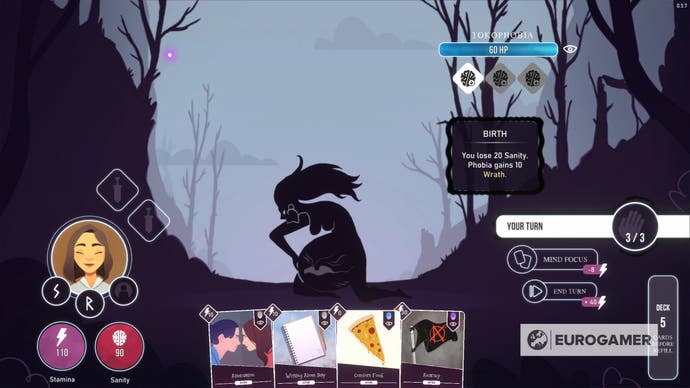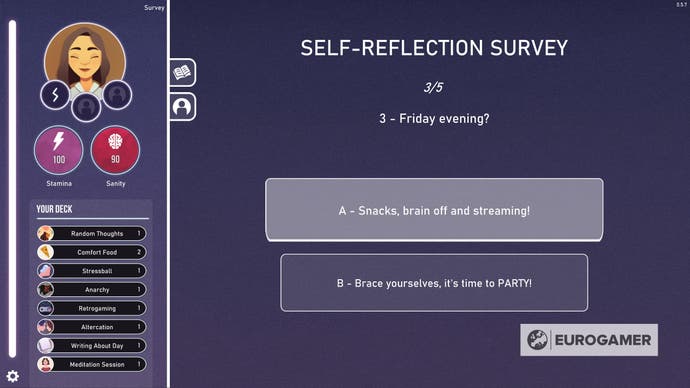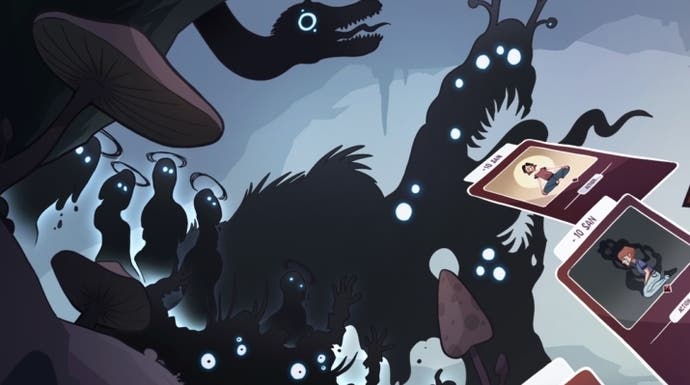Neurodeck tackling phobias and mental health is both refreshing and a concern
Plus, a wild dream about Tom Cruise.
Bertie: It's the monsters that do it for me. They are manifestations of phobias, and even though I am lucky enough to not have any phobias (that I know of), they unsettle me. Take the Tokophobia monster: it's based around a fear of childbirth, and here it's depicted by a silhouetted pregnant woman on her knees, whose bulging stomach morphs into an angry child when it attacks. That's freaky, right?
Or there's the Haptophobia monster, which I think ought to be Haphephobia because it's based around a phobia of touching. Here, it's a creature made of many hands that all reach out and grab at you when it attacks, and it's grotesque.
There are others but I don't want to spoil them. But it's the way they're brought to life, the way they look and behave, moving as if made for a vintage cartoon, in a kind of flick-book animated way, which speaks to a kind of quality in Neurodeck which elevates it. That, hand-in-hand with the game's focus on mental health, and cards themed around ways to deal with phobias, and keeping a mind calm and positive, are what makes Neurodeck more than another game moulded around a Slay the Spire frame. They're its difference. And they manage a kind of relevance and connection with, certainly, me, that other games have to work much harder for.


There are ways in which it differs from Slay the Spire too: it's not a straight copy. You have two kinds of health pools, for instance: Sanity and Stamina. Sanity is the most precious, because if it falls to zero, you faint and your run is over; but Stamina is what you use to play your cards, as well as a three-point action pool. If Stamina runs out, you can't do anything, so enemies attack both pools and you need to find ways to replenish them, while also attacking, in each round.
There are passive Traits you can apply to your character, and items you can equip (by playing cards - there's no inventory), so there are little mechanical differences ticking away, though it could all do with some finessing if it's going to stand confidently alongside games like Slay. But it's the cards - Meditation, Comfort Food, Tattoos - and how you earn them that really set the game apart. Between battles, you go to the library, or sleep, or go to the gym, or look in a mirror, all to do things that affect your deck in varying ways: copy cards, upgrade cards, unlock the possibility of a card, and so on. Unlocking traits means taking a survey and choosing from answers about how to tackle an emotionally loaded scenario. I haven't seen that before, and I like it.


But I worry about it too. I worry about what the game is saying about all of this. I worry that Neurodeck will make light of, or try to appropriate, phobias for a game in a way that will be disrespectful to people suffering from them. I love that it's brave enough to use these themes for a game, because there's a lot we could learn about them in the process of playing. But it has to be so careful it's giving us the right information about them, and not, god forbid, add to the stigmas already surrounding them.
Chris: I share Bertie's concerns about Neurodeck, I think: it uses the trappings of mental health, and I'm always glad to see this stuff discussed, but the very nature of applying these things to cards and battles makes me a little uncomfortable.
One thing that did stand out, though: as Bertie mentions, you can sometimes choose to do something other than fight a phobia for a round. At one point I decided to sleep. I can't remember exactly what mechanical thing happened to me, although I do recall that I got to choose between two new cards to add to my deck. What stood out, though, was a little tab marked: READ.
I clicked on it and I got to read someone's dream. A little vignette. Someone once said that there's nothing more boring than hearing about someone's dreams - this noted, a few nights ago I dreamed I bought an early Sumerian version of Pictionary for $600 I didn't have in order to impress Tom Cruise, and when I got it home it was made of biscuits - but it was nice to stop and read this little moment from someone's sleeping life: they tell me they never dream of flying, but they dream of going underwater and discovering that they can breathe underwater. I loved that this odd game had this neat little story tucked away for me to find.
If the Neurodeck team want the Tom Cruise and Sumerian Pictionary story, they can have that too, BTW.










